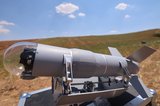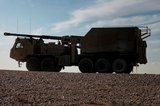Microwave weapon suspected in mystery attacks on US diplomats: report
Doctors and scientists increasingly suspect attacks with unconventional microwave weapons as the cause of the mysterious ailments that have stricken more than three dozen American diplomats and their families in Cuba and China, The New York Times reported on 2 September.
The victims reported hearing intense high-pitched sounds in their hotel rooms or homes followed by symptoms that included nausea, severe headaches, fatigue, dizziness, sleep problems and hearing loss.
A medical team that examined 21 of those affected in Cuba did not mention microwave weapons as a cause in a study published in March in the Journal of the American Medical Association.
But its lead author, Douglas Smith, the director of the Center for Brain Injury and Repair at the University of Pennsylvania, told the Times that microwave weapons are now considered a main suspect and that the team is increasingly sure the diplomats suffered brain injury.
Smith was quoted as saying: ‘Everybody was relatively skeptical at first and everyone now agrees there's something there.’
Neither the State Department nor the FBI has publicly pointed to microwave weapons as the culprit, and the Times said there were many unanswered questions as to who might have carried out the attacks and why.
After holding Cuba responsible for either carrying out the attacks or failing to protect American officials, the US in September 2017 recalled more than half of its staff from the embassy and expelled 15 Cuban diplomats from Washington.
Cuba has firmly denied any role in, or knowledge of, the incidents.
In June 2018, the State Department announced it had sent home US government personnel from China after they reported eerily similar incidents.
According to the Times, an American scientist, Allan Frey, first discovered in 1960 that the brain can perceive microwaves as sound.
His discovery opened a new field of research that ultimately led both the US and the Soviet Union to explore microwaves' potential use in unconventional weapons.
The Russians dubbed the class of envisioned weapons as psychophysical or psychotronic, according to the Times.
It said the US Defense Intelligence Agency warned in 1976 that Soviet research on microwaves showed potential for ‘disrupting the behaviour patterns of military or diplomatic personnel.’
A National Security Agency statement obtained by Washington lawyer Mark Zaid on behalf of a client described how a foreign power built a weapon ‘designed to bathe a target's living quarters in microwaves, causing numerous physical effects, including a damaged nervous system,’ the Times said.
The US military also researched weapons applications of microwaves, with the air force winning a patent on an invention shown to beam comprehensible speech into an adversary's head, according to the Times.
Navy researchers explored the use of the Frey effect to induce sounds powerful enough to cause painful discomfort, and even immobilize the subject, it said.
The Times said it is not known if Washington deploys such weapons.
More from Land Warfare
-
![Dedicated drone munitions could unlock modular mission potential]()
Dedicated drone munitions could unlock modular mission potential
Top attacks have proven effective against heavily armoured vehicles in Ukraine. A new family of uncrewed aerial system-delivered munitions is looking to press that advantage further.
-
![Elbit bets on local content for US howitzer bid as it faces off against popular systems]()
Elbit bets on local content for US howitzer bid as it faces off against popular systems
The Israeli company hopes that producing its Sigma artillery system wholly in the US will help it win a key US Army contract, but it will be up against the popular CAESAR Mk II wheeled weapon and the K9 tracked.
-
![Germany orders 84 Boxer howitzers as UK commits to a single demonstrator]()
Germany orders 84 Boxer howitzers as UK commits to a single demonstrator
Germany has ordered 84 RCH 155 self-propelled guns, as system incorporating Boxer 8×8 vehicles and the Artillery Gun Module, and 200 Puma Infantry Fighting Vehicles while the UK has committed to a single Early Capability Demonstrator RCH 155.
-
![Companies look to tank-launched guided projectiles for non-line-of-sight effects]()
Companies look to tank-launched guided projectiles for non-line-of-sight effects
While integration of guided weapons on modern armoured vehicles usually takes the form of a podded launcher on the turret exterior, recent developments suggest the concept of firing missiles from a tank’s main gun could be seeing a revival.
-
![Germany signs multi-billion-dollar deals for 6x6 CAVS and GDELS Eagle vehicles]()
Germany signs multi-billion-dollar deals for 6x6 CAVS and GDELS Eagle vehicles
The order is a further boost for the Common Armoured Vehicles System programme which has notched notable successes in the past 12 months. The first vehicle, made in Finland, will be delivered next year with local production expected to ramp up in 2027.
-
![Rheinmetall and KNDS tank tie-up narrows trans-European options]()
Rheinmetall and KNDS tank tie-up narrows trans-European options
The French and German governments signed an agreement in June 2018 to cooperate on the development of a new main battle tank under the Main Ground Combat System programme but the effort has struggled. This new agreement may damage it further.
























